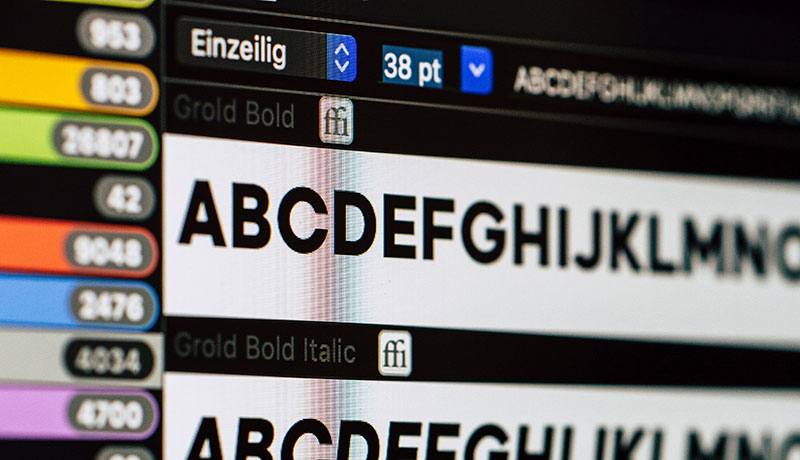Fonts Matter: Choosing the Best Fonts for Review Pages

When we talk about review pages, the first thing that comes to mind is the quality of content.
But let’s stop and think about the fonts for a moment, used on these pages. Even though this seems an insignificant detail, the font you choose to use affects how readers will view your content.
Because the wrong font for your review page can make you appear amateurish and untrustworthy. An improved choice would enhance readability as well as reader participation.
For instance, if you happen to be reading Growthink business plan reviews then a professional and easy-to-read font is ideal.
This would provide for the weighty and authoritative nature of reviews, which in turn can affect readers ‘estimate of a Growthink business plan.
After all, your typeface is part of your identity: It can either add to or subtract from the worth of what you say. So let us dive into why fonts are so important in review pages and how to choose the best ones for your business.
Selecting of Font isn’t only for Aesthetic
But in the world of business, fonts are even more weighty. A company’s personality, culture, and level of civilization can all be reflected in its stationery.
To illustrate the importance of fonts in business, consider this quote from Steve Jobs, co-founder of Apple: Jobs’s comment on design does apply to typefaces, too.
A company’s choice of font is not simply cosmetic: This has an impact not only on the readability of its content but also affects the impression a brand name creates and finally even profits.
As a result, font selection is something every business must think carefully about because it determines whether you have an active customer or simply someone passingly amused.
Readability
First, as you decide on fonts for review pages, ensure readability remains the top priority. Your audience should be able to effortlessly scan the material.
Properly selecting the typeface and font size carries significant importance. Legibility matters – too small risks straining eyes.
Words deserve suitable sizing for simple scanning. The finest range for review pages falls between 12 pt to 18 pt.
Niche
Secondly, think about the type of business you’re reviewing. When reviewing a legal site, perhaps you should select fonts that are professional, clean, and simple.
But if you’re reviewing a fashion blog, for example, maybe something sleeker and more tailored is what you are after.
For example, serif fonts with their traditional and classic appearance are likely to suit legal websites. Sans-serif fonts such as Arial or Helvetica look more modern when compared.
Consistency
Thirdly, the font choices should remain consistent throughout the review page. Using a mixture of fonts can look sloppy and unprofessional.
The consistency of font style, size, color, and spacing will make the review page more prominent. In addition, it also makes the content easier to read and more interesting.
As a professional business plan service, Growthink is more likely to use fonts that portray its professional and trusty image. But as for specific font choices, they tend to favor somewhat traditional and clean-cut hybrids such as Times New Roman or Garamond. These fonts are easy on the eye, enhance readability, and create a professional appearance.
In the world of business, what fonts you choose depends on how your brand is perceived and in which industry you operate.
Classic and professional serif fonts such as Times New Roman, Georgia, or Garamond are popular among business organizations like corporate businesses or legal firms.
However, firms in more artistic sectors like design or advertising may choose modern sans-serif fonts such as Helvetica, Arial, and Futura which suggest a touch of the new. Tech businesses tend to gravitate toward clean, streamlined fonts such as Roboto, Open Sans, and Proxima Nova because their interests lie in innovation.
Not least, no matter what industry you are in businesses that take brand identity and professionalism seriously tend to use the same fonts universally throughout their communication.
Compatible with Different Devices
Fourthly, make sure the chosen font is usable on different devices and browsers.
As mobile browsing becomes increasingly popular, you have to make certain that the type scales well and looks great on every device. To make sure the chosen font and size remain legible, a good rule of thumb is to test on a variety of screens and resolutions.
Tone of Voice
Finally, the tone of voice on the review page. It depends on the tone which you will select your font. For instance, if you’re writing in a more humorous tone then your choice of fonts may be casual sounding but when the mood is business-like they tend toward being formal. In order to make the review page more credible and trustworthy, select a font that’s suitable for tone of voice.
Avoiding Common Pitfalls
In choosing a font for your review pages, don’t do any of the following to avoid failure in content presentation.
Confusing Fonts: Don’t use too ornate a font. These can confuse the reader and undermine your message.
Tiny Sizes: Avoid types that are too small to read. You don’t want your readers straining their eyes to read what you have written.
Too Many Different Fonts: Overusing different fonts makes your content look disorderly and muddy. Limit yourself to a maximum of 2-3 fonts.
Ignoring Brand Identity: Your font needs to be consistent with your brand identity. Not just because it looks cool, doesn’t mean a font is right for your business.
Inconsistency: If possible, keep consistency throughout your content. But if you’re using a special font for your headings, be sure it always looks the same.
Ignoring Compatibility: Check the compatibility of chosen fonts across different devices and browsers. A good font is one that displays well on mobile devices.
Ignoring Accessibility: Finally, make sure to choose fonts that can be easily read by the visually handicapped. It also means selecting a suitable font size and not choosing one that is difficult to differentiate from another.
To sum up, the choice of font is an essential point that cannot be neglected when designing review pages.
Besides the quality of content, fonts are another way to get readers interested and gain credibility. In choosing fonts for review pages, make sure it is readable; and consistent on different devices and browsers.
Also, be careful that the tone of your voice fits with the business environment. Used properly, the right font can have a big effect on whether or not your review page succeeds. Always pay special attention to the small details.
- Deep Dive: Sea Color Palettes for Tranquil Designs - 3 May 2024
- The Stella Artois Logo History, Colors, Font, And Meaning - 2 May 2024
- Sky Color Palettes for Fresh Designs: 40 Examples - 2 May 2024









